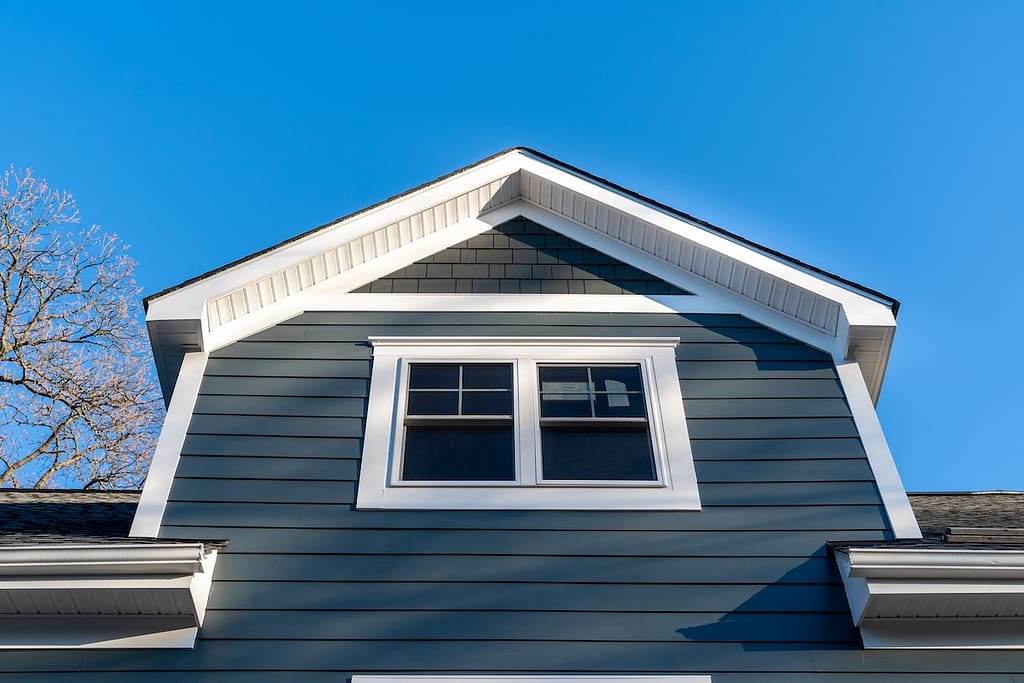Metal flashing is one of the most critical components in window installation, yet it’s often overlooked by homeowners. This thin layer of metal acts as your home’s first line of defense against water damage, directing moisture away from vulnerable areas around your windows. Without proper flashing installation, even the highest-quality windows can fail to protect your home from costly water infiltration and structural damage.
Whether you’re replacing old windows or installing new ones, understanding how to install metal flashing around windows can save you thousands of dollars in future repairs. This comprehensive guide will walk you through the entire process, from selecting the right materials to completing a professional-grade installation that will keep your home dry and secure for years to come.
In this article, we’ll cover:
- Essential tools and materials you’ll need for the job
- Step-by-step installation instructions for different window types
- Common mistakes to avoid during the installation process
- When to call professional window installers for help
- Maintenance tips to ensure long-lasting protection
🤔 What Is Window Flashing and Why Is It Essential?

Window flashing consists of thin sheets of waterproof material—typically aluminum, copper, or galvanized steel—installed around window openings to prevent water penetration. This critical component works by channeling water away from the window frame and directing it safely to the exterior of your home.
The primary functions of window flashing include:
Water Protection: Flashing creates a continuous barrier that prevents moisture from seeping into wall cavities, where it can cause mold growth, wood rot, and structural damage.
Thermal Performance: Properly installed flashing helps maintain your home’s energy efficiency by eliminating air gaps that can lead to drafts and energy loss.
Structural Integrity: By keeping water out of your walls, flashing protects the wooden framing members that support your home’s structure.
Long-Term Value: Quality flashing installation extends the life of your windows and prevents costly repairs down the road.
🧰 Essential Tools and Materials for Metal Flashing Installation
Before you begin your flashing installation project, gather all necessary tools and materials. Having everything on hand will help ensure a smooth, efficient installation process.
Required Tools
- Measuring tape and pencil for accurate measurements
- Tin snips or metal shears for cutting flashing material
- Utility knife with sharp blades
- Caulk gun and high-quality exterior sealant
- Hammer and galvanized nails or screws
- Level to ensure proper alignment
- Safety glasses and work gloves
- Ladder or scaffolding for upper-story windows
Materials You’ll Need
Flashing Material: Choose from aluminum, copper, or galvanized steel based on your climate and budget. Aluminum offers excellent corrosion resistance and is easy to work with, making it the most popular choice for residential applications.
House Wrap or Building Paper: This breathable barrier goes behind the flashing to provide additional moisture protection.
Sealants and Caulks: Use high-grade polyurethane or silicone-based sealants designed for exterior use.
Fasteners: Galvanized nails or stainless steel screws prevent corrosion and ensure long-lasting attachment.
✅ 6 Step Guide: How to Install Metal Flashing Around Windows

Properly installing metal flashing around windows is crucial to prevent water leaks and protect your home from damage. This 6-step guide ensures a durable, weatherproof seal to keep your windows secure.
1: Prepare the Window Opening
Start by removing any old flashing, caulk, or debris from around the window opening. Clean the surface thoroughly to ensure proper adhesion of new materials. Check that the window opening is square and properly sized for your new window.
Install house wrap or building paper around the opening, leaving extra material that can be folded over the window frame. This creates a secondary moisture barrier behind your flashing.
2: Install the Sill Flashing
The sill flashing goes in first and is arguably the most important piece. Cut your flashing material to extend at least 6 inches beyond each side of the window opening. Create a slight slope away from the building to encourage water drainage.
Position the sill flashing so it extends under the side jambs and overlaps the house wrap below. Secure it with galvanized nails every 8-12 inches, being careful not to create holes where water could penetrate.
3: Install Side Jamb Flashing
Cut the side jamb flashing pieces to fit from the sill to the top of the window opening, plus an additional 2 inches for overlap. These pieces should overlap the sill flashing by at least 3 inches to prevent water infiltration.
Install the side jamb flashing so it extends behind the window frame and overlaps the house wrap. The flashing should create a continuous barrier from the sill to the header.
4: Install Header Flashing
The header flashing goes over the top of the window and should extend at least 6 inches beyond each side of the opening. This piece overlaps the side jamb flashing and directs water away from the top of the window.
Create a drip edge by bending the outer edge of the header flashing downward at a 90-degree angle. This prevents water from running back toward the building.
5: Seal All Connections
Apply a continuous bead of high-quality exterior sealant along all flashing joints and connections. Pay special attention to corners where different pieces of flashing meet, as these are common failure points.
Smooth the sealant with your finger or a caulk tool to ensure complete coverage and a neat appearance.
6: Test the Installation
Before completing your window installation, test the flashing system by spraying water over the entire assembly. Check for any leaks or areas where water might penetrate, and address these issues before proceeding.
🚫 Common Mistakes to Avoid When Installing Window Flashing
Learning from others’ mistakes can save you time, money, and frustration. Here are the most common errors homeowners make when installing window flashing:
Insufficient Overlap: Always ensure flashing pieces overlap by at least 3 inches. Inadequate overlap creates gaps where water can penetrate.
Wrong Installation Order: Install flashing from bottom to top, with each piece overlapping the one below it, similar to shingles on a roof.
Using the Wrong Fasteners: Galvanized or stainless steel fasteners prevent corrosion. Regular steel nails will rust and fail over time.
Inadequate Sealing: Don’t rely on mechanical fasteners alone. Proper sealant application is essential for a watertight installation.
Ignoring Manufacturer Instructions: Different window manufacturers may have specific flashing requirements. Always follow their guidelines for warranty compliance.
Poor Surface Preparation: Clean surfaces are essential for proper adhesion. Remove all dirt, old caulk, and loose materials before installation.
⚖️ Professional Installation vs. DIY: Making the Right Choice

While some experienced DIYers can successfully install window flashing, this project requires precision and expertise to ensure long-term performance. Consider these factors when deciding whether to tackle the project yourself or hire professionals:
When to Consider Professional Installation
Complex Window Configurations: Bay windows, corner windows, or custom shapes require specialized knowledge and techniques.
Multiple Story Installations: Working at height increases safety risks and may require specialized equipment.
Structural Issues: If you discover rot, damage, or other structural problems during preparation, professional assessment is essential.
Warranty Considerations: Some window manufacturers require professional installation to maintain warranty coverage.
Time Constraints: Professional installers can complete the work faster and more efficiently than most homeowners.
Benefits of Professional Installation
Professional window installers bring years of experience and specialized knowledge to your project. They understand local building codes, have access to commercial-grade materials, and can identify potential problems before they become costly issues.
At Louisville Window Company, our experienced installation team has completed thousands of window projects throughout Kentucky and Southern Indiana. We use only premium materials from trusted manufacturers like Pella, ProVia, and Therma-Tru, ensuring your investment is protected for years to come.
🛠️ Maintenance and Inspection of Window Flashing
Proper maintenance extends the life of your window flashing and prevents costly repairs. Follow these guidelines to keep your flashing system performing at its best:
Annual Inspections
Check your flashing at least once per year, preferably in the spring after winter weather has passed. Look for:
- Loose or missing fasteners
- Cracks or holes in the flashing material
- Failed sealant that needs replacement
- Signs of water damage or staining
- Corrosion or rust on metal components
Preventive Maintenance
Clean Regularly: Remove debris, leaves, and dirt that can trap moisture against the flashing.
Maintain Sealants: Replace cracked or deteriorated caulk promptly to maintain the water barrier.
Check Drainage: Ensure water can flow freely away from the window and isn’t pooling against the flashing.
Trim Vegetation: Keep plants and shrubs away from windows to prevent moisture retention and physical damage.
When to Call for Professional Help
Contact professional window installers if you notice:
- Multiple areas of flashing failure
- Signs of water damage inside your home
- Extensive corrosion or deterioration
- Problems with the window frame or surrounding structure
Early intervention can prevent minor issues from becoming major repairs.
🤝 Trust the Experts for Your Window Flashing Needs
Installing metal flashing around windows requires precision, quality materials, and extensive knowledge of building science principles. While this guide provides comprehensive information about the process, many homeowners find that professional installation offers the best value and long-term protection for their investment.
Don’t leave your home’s protection to chance. Contact Louisville Window Company today to schedule a consultation with our window experts. We’ll assess your specific needs, provide honest recommendations, and deliver the professional installation your home deserves. Your investment in quality window flashing today will protect your home for decades to come.
Get started with your window flashing project today – contact Louisville Window Company for a free consultation.







